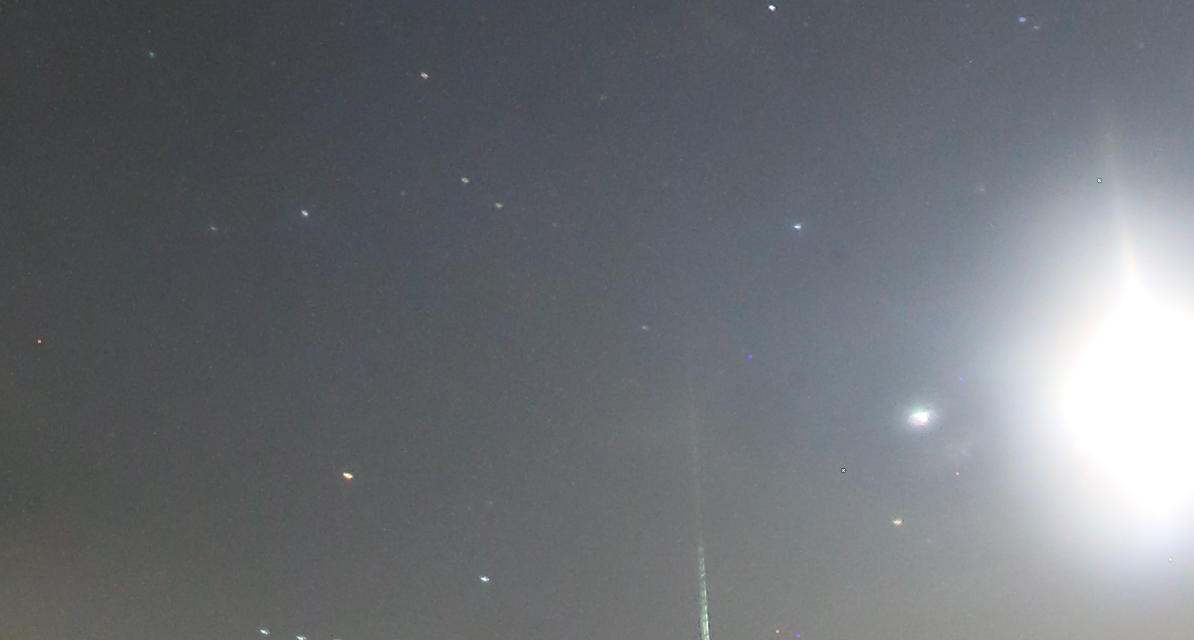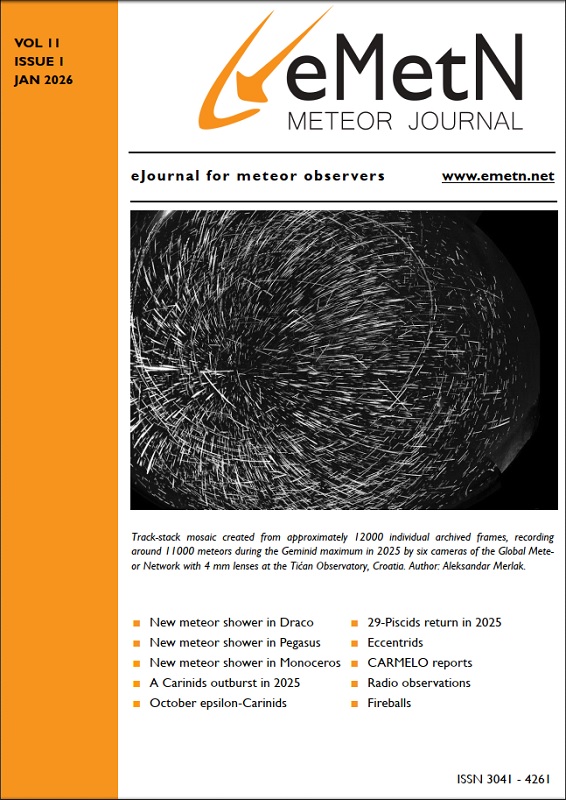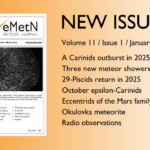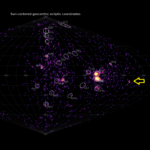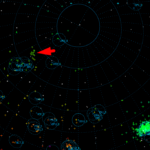Looking back at 2024
After the very successful year 2023, a somewhat less successful year followed. Of course, the moon cooperated less in 2024 than the previous year. A first quarter moon during the Perseids is of course not too bad, but a lot of moonlight during the Geminids makes a huge difference. In total, 84.17 hours could be observed during 31 different sessions. This yielded 1631 meteors, which means that this year ends a little below average. The Perseids could be observed well. First a week from the Netherlands (4 clear nights), then a week from Saint-Trinit in the south of France (6 nights). The second week I was able to observe together with Selma Koelers, Carl Johannink, Peter van Leuteren and Sietse Dijkstra. A very successful week!
In total for the period 1980-2024, observations have been made in 1330 different nights (3791.98 hours effective) and that yielded 95570 meteors.
The meteor observations
2/3 January 2025
The first meteorshower of the year are of course the Quadrantids. With a maximum on 3 January around 16 UT, the emphasis was mainly on the morning of the 3rd and evening of the 3th of January. Clearings were expected for the night of 2/3 January. The evening session of 3 January could unfortunately not take place: to much clouds…
That evening and night, Sat 24 and the rain radar were consulted regularly. Sometimes it cleared up nicely, but it quickly became overcast again. This was also the case around 1 UT when it was still largely cloudy. But the Sat24 images did show a larger area of clearing that should arrive around 2 UT. Indeed, the area of clearing became visible in the north. Quickly installed myself on the roof. Indeed, it was possible to make observations between 01:54 and 02:58 UT. Sometimes I stopped briefly to let clouds pass. In total, 13 Quadrantids, 1 Antihelion and 2 sporadic meteors were seen in these 0.931 effective hours with a limiting magnitude of 6.3. The most beautiful meteor was a -1 Quadrantid in Bootes. Also worth mentioning is a slow magnitude 0 sporadic meteor that seems to rise from the horizon low in the north.
After this, the clouds came in for a while. However, between 04:35 and 04:59 UT it was mostly clear again. In these 0.40 effective hours, another 6 Quadrantids and 1 sporadic meteor were seen. One of those Quadrantids was a -3 meteor. Too bad the weather did not cooperate better…

Figure 1. Bright Quadrantid captured with all sky station EN908 Ermelo in the evening of January 3, 2025 during a short clearing.

Tabel 1. Table 1. Meteor counts during the night of Januari 2/3, 2025.
During January, sporadic meteor activity decreases rapidly. Unfortunately, no more observations were made in January after the Quadrantids. Gray days and occasional heavy rain were mostly the weather conditions. However, early February it temporarily improved. Observations were possible for 3 nights in a row.
January 31/February 1, 2025

Table 2. Meteor counts during the night Januari 31/Februari 1, 2025.
During this somewhat hazy night observations were carried out between 00:13 and 02:15 UT: 2 hours effective yielded 11 meteors of which 2 Antihelion and 1 late #020 Coma Berenicide. As expected the hourly frequencies were low. The most beautiful meteor appeared around 01:02 UT: a medium fast -2 orange colored meteor moved from Ursa Major to Gemini.
February 1/2, 2025

Table 3. Meteor counts during the night Februari 1/2, 2025.
Thanks to the weekend I could observe a bit longer, now between 02:05 and 05:08 UT, 3 hours effectively. A nice clear and transparent sky with the limiting magnitude rising to 6.3. That usually produces a bit more meteors as can be seen in the table above. Of the 23 observed meteors there were 4 meteors from the Antihelion region and another late # 020 Coma Berenicide. Also two nice meteors: at 03:19 UT a -1 sporadic meteor moved from the Corona Borealis to Bootes. And around 4:22 UT a sporadic meteor with mv 0 in Lyra.
February 2/3, 2025

Table 4. Meteor counts during the night Februari 2/3, 2025
Also during this night a three hour session. However, the sky had become a bit more hazy, there was some fog and now and then a passing tuft of cirrus. A limiting magnitude of 6.2 and with a somewhat larger decay towards the horizon. This almost always has an effect on the number of meteors seen. I counted just 14 meteors, of which 2 from the Antihelion region. This time also no really bright meteors, so a somewhat boring session… After this night there were still a number of bright (evenings) but no more observations were made in February. The wet and gray weather also returned. Fortunately, March would be a much better month for meteor observations. So at the beginning of March it was again possible to observe for three nights.
March 2/3, 2025

Table 5. Meteor counts during the night March 2/3, 2025
Due to the forecast of fog it was decided to start observing early in th evening. However, it turned out that it remained clear until dawn. As expected very low activity, especially the first hour was boring. A short +1 sporadic meteor was most noteworthy. The next night it was also clear but very foggy. No observations during that night.
March 4/5, 2025

Table 6. Meteor counts during the night March 4/5, 2025.
A rather hazy and misty night with temperatures down to -3 Celsius. Despite that I still counted 13 meteors during 2 hours. A beautiful -1 sporadic meteor moved from Corona Borealis to Hercules.
March 5/6, 2025

Table 3. Meteor counts during the night March 5/6, 2025
Good transparency yielded 18 meteors in 3 hours. The best meteor this time was a beautiful blue-white +1 Antihelion with a long wake. These were the last winter observations of the 2024/2025 season. During full moon later in the month there were many clear nights, so let’s hope the many clear nights of March will become a trend this year.
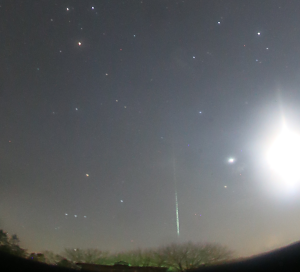
Figure 2. 3 hours before starting the visual meteor observations, a bright fireball was captured with my all sky camera EN908 Ermelo.
March 30, 2025 at 22:30:05 UT. The fireball was also captured by other EN stations. The image is a bit unsharp because of dew inside the plastic dome.

